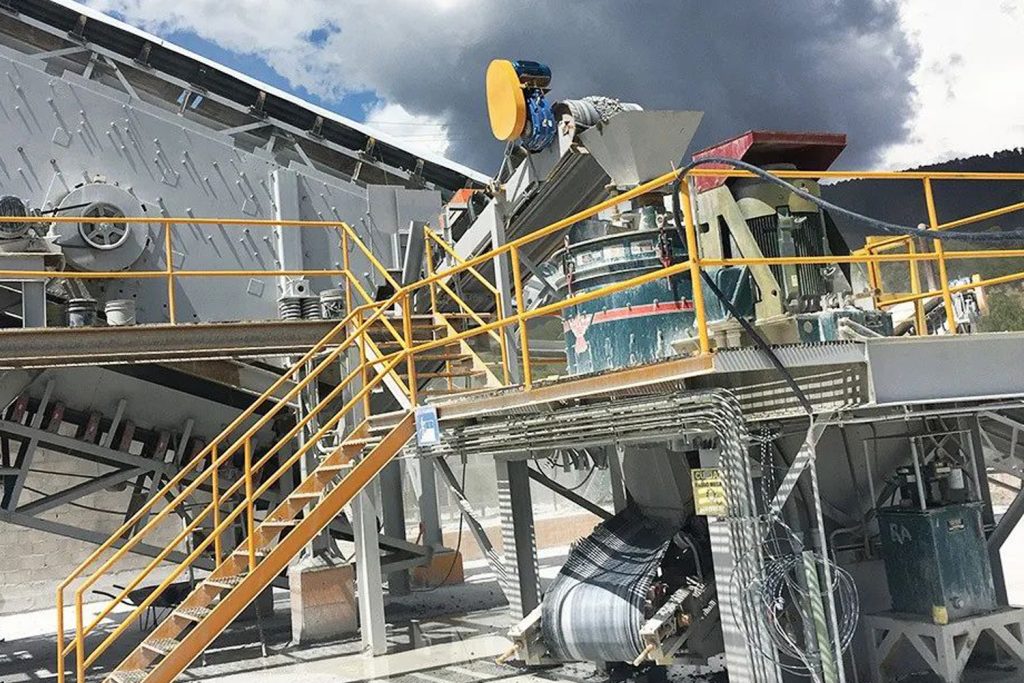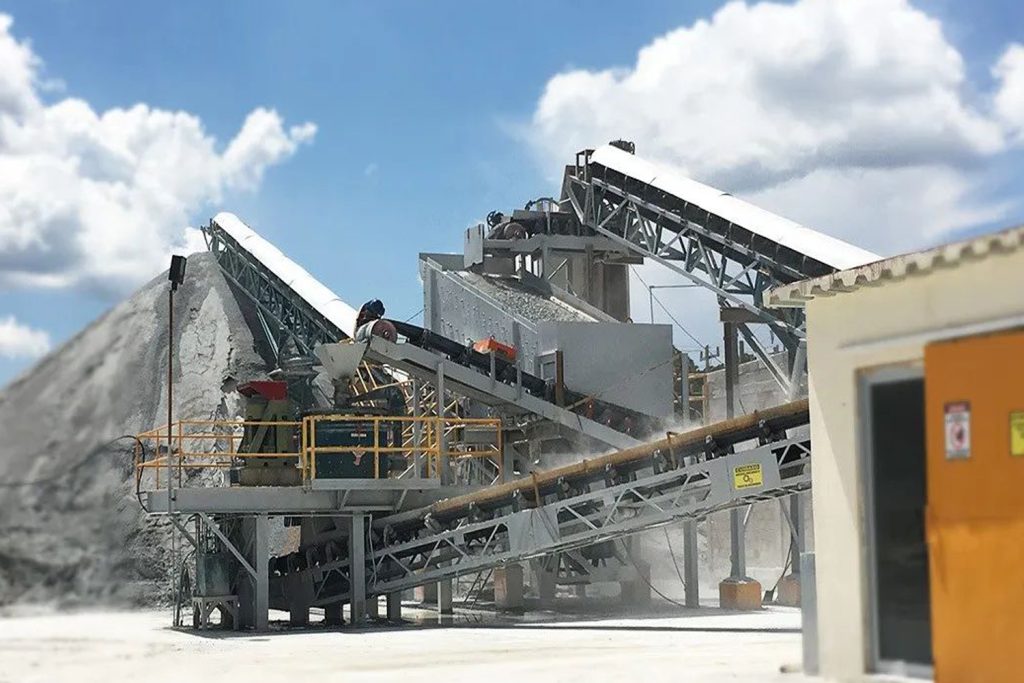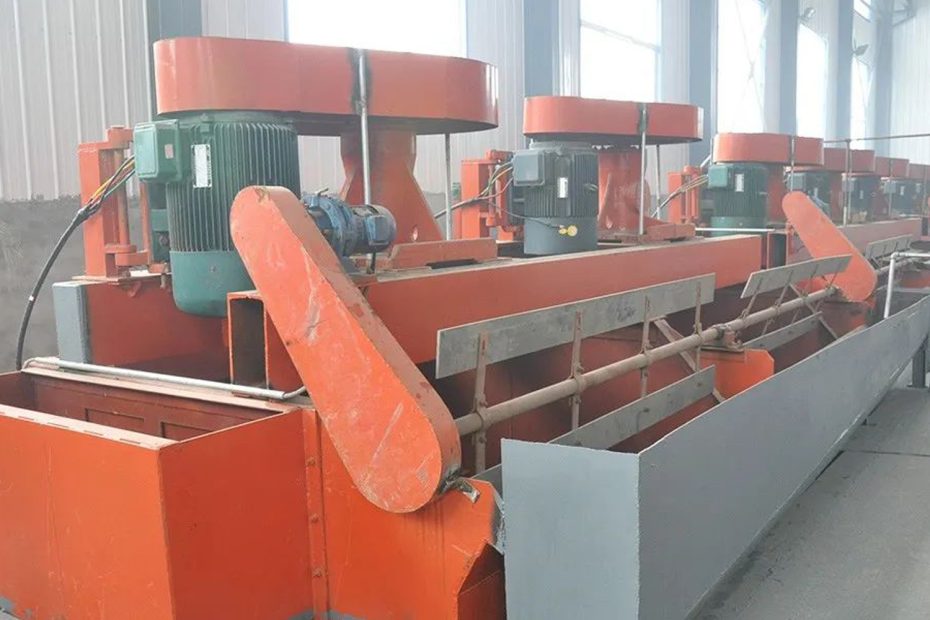As an important non-ferrous metal, lead and zinc are widely used in national economic construction. With the development of industry, the demand for lead-zinc concentrate raw materials is increasing. In order to increase the production of lead-zinc raw materials, the concentrator should choose a suitable lead-zinc ore separation process.
Analysis of the four-step mineral processing of lead-zinc ore
The sorting method of lead-zinc ore is mainly flotation, and itsmineral processing can generally be divided into four stages: crushing and screening stage, grinding stage, sorting stage and dehydration stage. The following is an analysis of the process flow of lead-zinc ore around these four stages.
The crushing stage of lead-zinc ore
Three processes are often used in the crushing stage of lead-zinc mines: two-stage one-closed circuit crushing, two-stage open-circuit crushing and three-stage one-closed-circuit crushing. When formulating the crushing process, it is necessary to refer to factors such as the lump size of the raw ore, the physical and chemical properties of the raw ore, the mud content of the ore, and the final ore particle size. The lead-zinc ore crushing operation includes two basic operations of crushing and screening. The screening stage of lead-zinc ore is divided into pre-screening and inspection screening.
The pre-screening is set before the crushing operation, and the fine-grained lead-zinc ore is pre-screened, which can improve the working efficiency of the crusher. Due to the different sizes of the ore discharge products of the crusher, in order to meet the particle size requirements of the final crushed products, inspection and screening are usually set up after the crushing operation to form a closed circuit with the last section of the crusher. If the raw ore of the lead-zinc ore contains a large amount of water or mud, it needs to be washed to avoid blocking the crushing equipment, resulting in low equipment operation efficiency and affecting the mineral processing efficiency of the lead-zinc ore.

Grinding stage of lead-zinc ore
The grinding stage of lead-zinc ore can be divided into one-stage grinding process and two-stage grinding process. When the required grinding particle size is ≤0.15mm, small and medium-sized mineral processing can choose one-stage grinding process, and large-scale mineral processing plants can choose two-stage grinding process. The grinding stage of lead-zinc ore is followed by grading operations.
In order to improve the efficiency of grinding operation, the concentrator can carry out pre-classification, inspection classification and control classification. When pre-grading, the qualified particle size of the lead-zinc ore should not be less than 14%-15%, and the maximum particle size should be ≤6-7mm. The purpose of checking and grading is to ensure that the particle size of the overflow pulp is qualified, and the unqualified coarse particles are returned to the grinding stage. Grinding operations often form a closed circuit with grading operations.
Flotation stage of lead-zinc ore
When lead-zinc ore is subjected to flotation, according to the flotation sequence, it can be divided into priority flotation process, mixed flotation process, partial mixed priority flotation process and equal flotation process.
Flotation order 1# : Priority flotation process:
In priority flotation, one of the minerals is preferentially selected, and the rest of the minerals are suppressed and not flotation. Afterwards, the remaining minerals are activated and enter the next stage of flotation for sorting. The specific process is as follows: the lead-zinc raw ore enters the flotation machine after pretreatment, and the lead concentrate is first floated out, and then the remaining minerals enter the second-stage flotation machine for secondary flotation to obtain zinc concentrate. The rest of the minerals can also be floated again.
Flotation order 2# : Mixed flotation process:
Mixed flotation is to float two or more useful minerals together, and then separate the mixed concentrate into several qualified concentrates. After the lead-zinc raw ore is ground, it enters the flotation machine for mixed flotation, the tailings are discarded, and the lead-zinc mixed concentrate is separated to obtain lead concentrate and zinc concentrate.

Flotation order 3# : Part mixed priority flotation process:
This process is to preferentially float certain two kinds of useful minerals in lead-zinc ore and suppress other minerals. After the mixed concentrate is separated, the third useful mineral in the ore is activated before flotation. For example, when copper-lead-zinc ore is partially mixed and preferentially flotation, the copper-lead mixed concentrate is preferentially flotation, and then the copper-lead concentrate separation and zinc activation flotation are carried out respectively.
Flotation order 4# : other flotation processes:
The equal flotation process is mainly to use the difference in floatability of useful minerals, and adopt the principle of first easy and then difficult to carry out flotation. When the lead-zinc ore enters the flotation machine, the lead-zinc ore mainly composed of lead can be flotation, and then the lead-zinc separation is carried out gradually, and finally lead concentrate and zinc concentrate are obtained.
Concentration and dehydration stage of lead-zinc ore
The lead and zinc concentrates after flotation need to be dehydrated. Thickeners can be used for concentration, and filters or filter presses can be used for filtration in concentrators. The specific model can be determined according to the budget and process design of the concentrator.
In summary
The above is the process flow of lead-zinc ore mineral processing. Due to the complex composition and variety of lead-zinc ore, the mineral processing needs to be determined according to the ore analysis test results. The editor here suggests that scientific and reasonable means should be used to formulate the process flow of lead-zinc ore in order to achieve the ideal return on investment.
